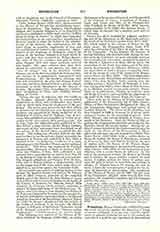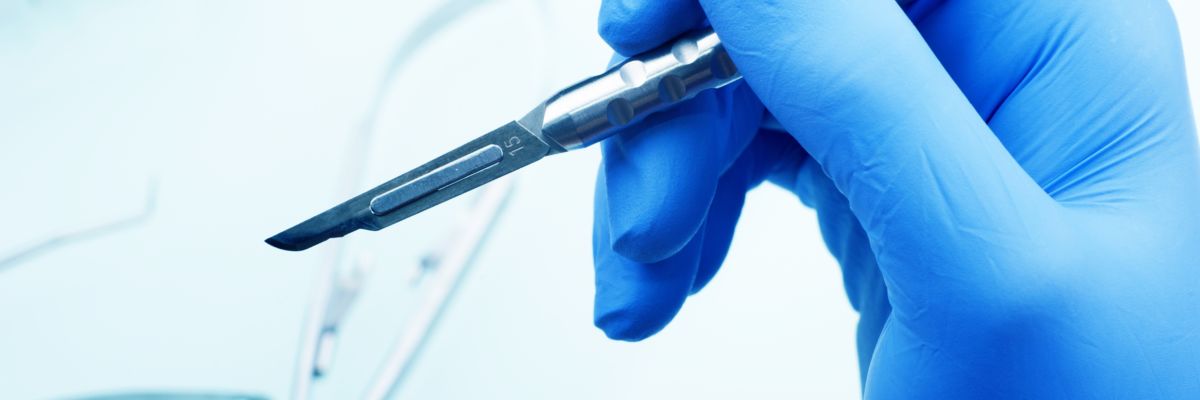

Vivisection, MORAL ASPECT OF. —Defined literally the word vivisection signifies the dissection of living creatures; ordinarily it means any scientific experiment on animals involving the use of the scalpel; incorrectly it is used for any experimental observations of animals under abnormal conditions. The literal dissection of living animals is practiced nowhere, as it is much more convenient to study the structure of man’s body in the cadaver. According to Aulus Cornelius Celsus, who lived in the reign of Tiberius, and Tertullian (about 160-240) living criminals were dismembered at Alexandria in the reigns of Ptolemy II (285-247 B.C.) and Ptolemy III (247-221 B.C.). The same act was maliciously attributed to Jacobus Berengarius, Andreas Vesalius, and Gabriel Fallopius, celebrated anatomists of the sixteenth century. The history of scientific observation of and experimentation upon animals, both bloodless and bloody, began at the moment when it was perceived that the processes of nature could be discovered only by the exact observation of nature and not by philosophical methods. For physiological and pathological research experimentation with animals is an indispensable aid, while for medical science it is of much value. It gives a view of the working processes of the living organism, permits us to produce diseases artificially, and to investigate the organic changes produced by these diseases in each stage of their course.
Before William Harvey (1578-1657) could announce his discovery of the circulation of the blood he was obliged, as he confesses, to make for years innumerable vivisections of animals of all kinds, for he could investigate the mechanism of the circulation only in the living animal. He was thus able to reach the conclusion that the arteries which are empty in the corpse are filled with blood during life and not with air, as was believed until then. The Jesuit Jaspar Schott (1608-66), professor of mathematics and physics at Wurzburg, put animals into an enclosure where the air was rarefied and described the phenomena of death by suffocation on the basis of his experiments. He injected solutions of drugs into the veins of dogs, and proved that medicines administered in this manner produce effects more quickly than when taken into the stomach. Christopher Wren made similar experiments at Oxford in 1656. Thomas Willis (1622-75) propounded, after numerous experiments, the theory of the localization of the different faculties in the several parts of the brain, and all our knowledge as to the functions of the brain has been acquired almost entirely in the same way. Albrecht von Haller (1708-77), the founder of modern physiology, repeatedly emphasizes in his works the importance of experiments on animals. Observation and reflection led Alexander Walker to the conclusion that the nerves arising from the anterior spinal ganglion serve to convey sensation, and those from the posterior convey motor impulses. Charles Bell (1774-1842) proved the opposite to be the fact by simply cutting through the anterior roots. The experiments made on animals by Claude Bernard (1813-78) yielded information concerning the use of the pancreas in the digestion of fats, concerning the morbid process of forming glucose or sugar in the liver, the origin of diabetes, etc. Our knowledge concerning assimilation and digestion, the appearance of emboli or obstructions in blood-vessels, the effects of poisons, and of modern drugs is derived from similar sources. The treatment of hydrophobia and the whole of serum-therapeutics rest on almost endless and laborious experiments on animals. It was proved by feeding animals with trichiniferous meat that parts of the body are first and preferably attacked by trichinae. The experiments led to the establishment of careful inspection of meat by which thousands of people have been preserved from the danger of trichinosis, Before the attempt could be made to excise a degenerated thyroid gland, the larynx, or a kidney in human beings, the operation had to be made on innumerable mammals and the processes of the cure observed. How can a surgeon make a practical test of a theoretically established new method of sewing up a wound if not on animals? There is no branch of medical science that cannot be essentially benefited by experiments on animals. In the last instance the results of the experiments do good to humanity. Consequently it appears inadmissible to declare vivisection a means morally forbidden and to characterize experiments on animals as the torture of animals.
About 1870 the societies for the protection of animals, especially those in England, began a violent agitation against vivisection, which led in 1876 to a bill entitled “Cruelty to Animals Act”. In this way vivisection was essentially restricted. The agitation spread later to Germany and Austria and in 1885 led in both countries to legislation which permitted vivisection under conditions that did not prevent experiments for research. The opponents of vivisection claim that experiments on animals have no direct value for medical science, that it is an aimless torture, brutalizing the mind, and that distinguished scholars have denounced it. Compassion for the defenseless animal plays a large part in the opposition. It is just at this point, however, that an incongruity becomes evident between the feeling for the human being and for the animal, as the instances cited above show that experiments on animals are undertaken for the benefit of suffering humanity. Rudolf von Ihering remarks very appositely: “The sympathy with the animal that is shown in each attack is in reality disregard of man, a confusion of moral feeling that sacrifices the human being in order to protect the animal” (“Z week im Recht”, II, 141). Windthorst, the leader of the Center party, said in the German Reichstag on January 23, 1882: “There is absolutely no doubt that we should notary to prevent what is really necessary for science. I am certainly of the opinion that an animal can in no way be placed on an equality with man; it is created to serve him, and when necessary it must serve him in this manner.” It is unjust to accuse vivisectors of cruelty, for in operations causing blood every investigator, to avoid being disturbed while at his work, uses narcotics if possible. It has also been asserted that the customary curare, which is an arrow-poison, paralyzes only the motor nerves and not those of sensation. Besides curare, however, other poisons are used, as ether, chloroform, and morphine. Far more painful and morally impeachable are those operations on animals which spring from a perverted taste or fashion, as the castration of mammals and birds, the scaling of living fishes, the cooking of live crustacea, and the clipping of the tails and ears of pet dogs.
There may be a few physicians among the opponents of vivisection yet these are always men who have no interest in scientific investigation and who are often not able to comprehend an investigator’s method of thinking. Even were there among the opponents of vivisection actual scientific investigators, the judgment of so small a number should not be taken into consideration in view of the numberless declarations made by all the medical faculties of Austria, Germany, and Switzerland, as well as by large numbers of medical societies throughout the civilized world, that experiments on animals are absolutely essential for investigation, and cannot be replaced by any other method. The celebrated anatomist of Vienna, Josef Hyrtl, was frequently called an opponent of vivisection. This error arose from quoting as proof sentences torn from their context. Hyrtl was only an enemy of excesses, and made many experiments on animals himself. He wrote: “Every thoughtful physician will acknowledge that the science of medicine o’ ee great and important discoveries to vivisection. But for it, what would we know of the lacteals, of the functions of the nervous system, of fecundation and embryological development?”. The objection that experimentation on animals is inadmissible as a means of instruction, because the pupil ought to believe the teacher, is just as false as if it were asserted that physics could be taught without experiments. It is certain, however, that limitations are possible for the lecture-room. A legislative body exceeds its authority when it wishes to prescribe to the investigator the methods and means to be used in investigation. But it may have the right to prescribe certain conditions. Thus, Austria has the following rational regulations: Experiments on living animals can be made only in government institutions, only by the heads of the institutions or instructors, or under their supervision by other persons. They are also permitted in exceptional cases for purposes of instruction. When possible, the animals are to be thoroughly anaesthetized. Higher animals are to be used only when it is absolutely necessary. The laws respecting vivisection in Germany are similar to these. In England the Act relating to vivisection was passed in 1876. It places various restrictions upon the practice of experiments on animals. A licence is required, besides one or more certificates setting forth the conditions under which the experiment is to be made. The Home-Secretary is empowered by the Act to issue such additional regulations as may in his judgment be required by the circumstances. See Cruelty to Animals.
LEOPOLD SENFELDER


